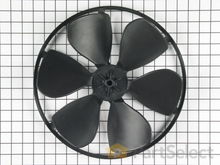Appliance Parts
- Accessories
- Dishwasher
- Dryer
- Stove / Oven
- Microwave
- Refrigerator
- Washer
- See more... See less...
Lawn Equipment Parts
- Lawn Mower
- Chainsaw
- Blower
- Generator
- Air Compressor
- Lawn Tractor
- Pressure Washer
- See more... See less...
How to Repair a Dehumidifier with Coils That are Icing Up
Click a Part Below to Start Your Repair:
Humidity Control Blower Wheel or Fan Blade Fan Motor Bi-Metal Thermostat Humidity or Temperature SensorAbout this repair:
- Rated as REALLY EASY
- 32 repair stories
Humidity Control
Blower Wheel or Fan Blade
Fan Motor
Bi-Metal Thermostat
Humidity or Temperature Sensor
More Repair Parts
Still not sure which part is broken? We can offer you custom troubleshooting help if you search with your model number.













































